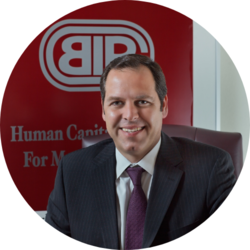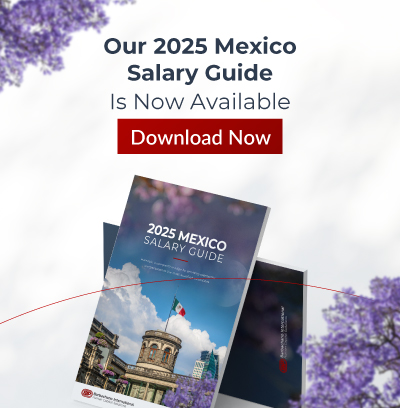
Traditional vs. Emerging Leadership: Sustainability in the Ever-Changing World
With the rapid and ever-evolving rate at which business is shifting, leaders must adapt their leadership styles to ensure they aren’t left behind. Traditional leadership strategies are rooted in long-term planning, leading from the top down, and the “if it’s not broken, don’t fix it” mentality.
While there is still a time and place for tradition, to achieve sustainability leaders must balance the tension between traditional strategies and emerging strategies. Here are a few key areas where blending leadership styles can optimize operational outcomes.
Innovation vs. Tradition
Traditional leadership styles center around identifying what works, making a few tweaks to improve it, and staying the course. Utilizing this philosophy today as a solo strategy is increasingly problematic. How many app, tech, and niche product companies have we seen hit the ground running—only for consumers to lose interest or move on? Innovative leaders are happy to continue to do what’s working, but they never stop analyzing their data. They use data to improve their current products, create and test new products, optimize internal operations, and improve the quality of life for their team. Since their approach is data-driven, they also know when to fine-tune their objectives and when to completely shift gears.
The CEO of Gravity Payments, Dan Price, made headlines in 2015 by ensuring no one in the company made less than $70K annually. His innovative strategy was met with much criticism but resulted in rapidly tripling his revenue. In addition, staff size more than doubled, staff homeownership grew 10x, 401(k) contributions doubled, turnover dropped in half, and staff engagement rose to 2x the national average, coming in at 76%.
Power With and Power To vs. Power Over
There are 4 types of power structures: power over, power with, power to, and power within. Traditional leaders exhibit ‘power over’. They not only have the final say but they devise most of the goals and strategies. Sustainable leaders strike a balance by empowering their team. They exhibit ‘power with’, by providing truly open lines of communication. They listen more than they speak and ask open-ended questions. They exhibit ‘power to’, by allowing their team to brainstorm and devise new and improved strategies. As a leader, they make the final decision, but most decisions are a collaborative process.
When the pandemic hit, Gravity Payments lost 55% of their revenue, and like many businesses around the world, Price was faced with laying off his team. Always open to empowering his team, Price decided to stop paying himself until further notice and asked his team for a solution. They anonymously shared the pay cuts they were willing to take, with 98% of the team agreeing to cut their wages—several were willing to reduce their pay by 50% and 10 were willing to continue to work for free. Price took their solution and created a modified version. There were zero layoffs, no employee salary was reduced by more than half, and for those who earned less than $100,000, the maximum reduction was 30%.
Adaptable Planning vs. Long-Term Planning
An emerging leader balances staying true to their mission, vision, and brand while keeping their finger on the pulse of all industry-wide and in-house shifts. They set measurable goals and map out tactics to achieve them, but instead of being married to their strategies—they leverage real-time data to make micro and macro changes. This keeps innovation alive, maximizes what’s working, and minimizes the negative impact of what’s not working.
The pandemic is a shining example of countless leaders around the world adapting their plans. Many hired experts to help their teams rapidly transition to a digital business model. Even those who had little to no intention of offering remote employment pre-pandemic had to adapt to survive. They invested in or upgraded their project management software, improved their Cloud security, added digital products and services, eliminated products and services, and continued to adapt rapidly to keep their business going. Remote employment peaked at 51% in the United States and many companies will continue to offer flexible work options.
Developing A Best of Both Worlds Leadership Style
Successful and sustainable leaders understand that they must balance the tension between traditional and emerging strategies. They maintain accountability for their outcomes and make the tough decisions, all while empowering their teams and encouraging communication and innovation. The tips below will help you manage the tension between these two leadership styles – traditional and emerging.
Learn Your Style and Strengths
The first step is to identify which leadership style comes most naturally to you. Once you understand which style you are drawn to, you can develop the self-awareness to challenge your initial response. Identifying your strengths can help with this. An excellent place to begin is with the book NOW, Discover Your Strengths by Marcus Buckingham and Donald O. Clifton Ph.D.
Prioritize Development
Now that you know your natural tendencies, it’s time to create a personal development plan. This should include strengthening your strengths, further developing your areas of opportunity, and investing in industry and business-specific development. Between books, workshops, seminars, industry networking, and live and digital training sessions you can easily find the resources required to grow. Don’t forget the ongoing industry, business, and individual development of your team members.
Upgrade Your Technology
One of the key reasons to continue your industry and business development is to ensure you leverage technology to help you lead. The advances in AI and data science can provide you with internal and external analytics that help you measure the traditional KPIs, as well as the game-changing micro data points that will help you and your team innovate.
The only constant in life and business is change. These leadership tips will help you develop strategies that are current, data-driven, and results-oriented.

By Fernando Ortiz-Barbachano
President & CEO of Barbachano International (BIP)
Barbachano International is the premier executive search and leadership advisory firm in the Americas (USA, Mexico, Canada, and Latin America) with a focus on diversity and multicultural target markets. Outplacement and Exe


